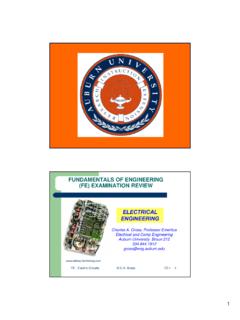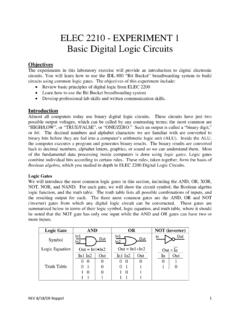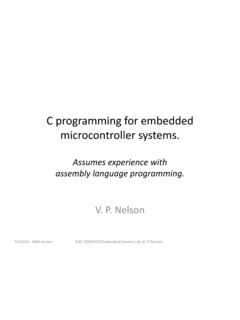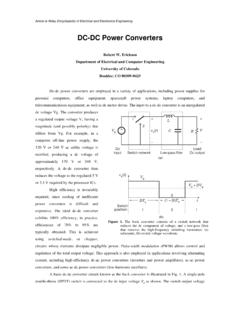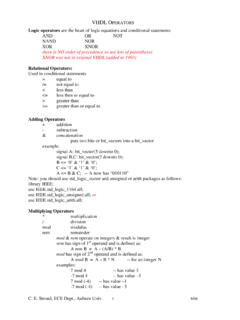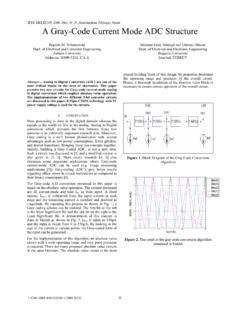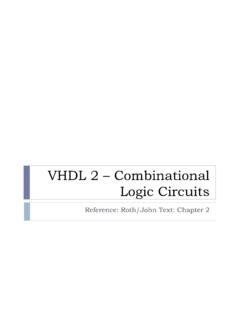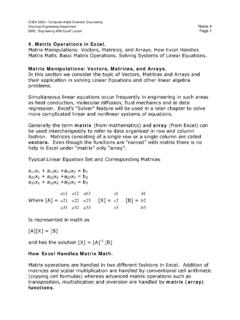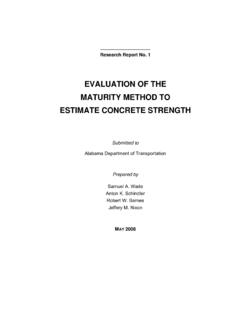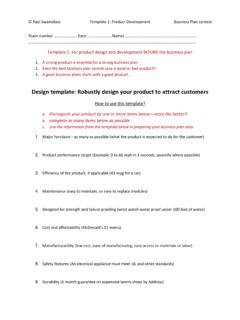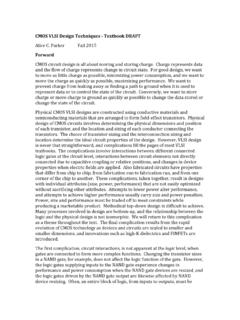Transcription of Book Review: Low-Voltage CMOS VLSI Circuits
1 book review : Low-Voltage cmos vlsi CircuitsJames B. Kuo and Jea-Hong LouWiley-Interscience, NY, 1999, 439 pp., ISBN 0-471-32105-2 Reviewer: Kim, KyungseokIn these days, there are many digital products, which are implemented by cmos vlsi technology, in the market. Currently, cmos vlsi is progressing at fast rate for decadesand dominating most of markets in digital circuit areas. In a constant voltage scaling, thevertical and later electric fields are increased, which reduced to oxide reliability. Low powersupply voltage is required necessarily. For the design of cmos vlsi systems using low powersupply voltage , the implementation of chips is directly limited by processing technology anddevices. The objective of this book is to demonstrate the useful techniques in the designingof logic level and system building blocks in Low-Voltage cmos vlsi book is composed of six chapters with introducing briefly the evolution of the Low-Voltage cmos vlsi systems in first chapter.
2 In chapter 2, the trend of cmos technologyand devices related to low-power subjects are described from um to um. Fordeep submicron cmos devices, it is useful to mention shallow trench isolation (STI) toincrease device density, lightly-doped drain (LDD) structure to reduce the hot carrier effectscausing aging and avalvanche breakdown under the high electric field, and a buried channelto maximize the current driving capability with the enhance-mode cmos device. Anotherdevice technology of BiCMOS and SOI (silicon-on insulator) is reviewed. The modeling ofCMOS device behaviors are analyzed with the equations including threshold voltage , bodyeffect, short channel effect, narrow channel effect, electron temperature effect, hot carriereffect and capacitance model.
3 Finally, the BSIM SPICE models are summarized for deep-submicron cmos 3 describes the evolution of innovative static logic Circuits starting from the voltagetransfer characteristic of a cmos inverter as a basic circuit . The power dissipation of theCMOS inverter is linearly proportional to its operating frequency, which is caused by switchactivities. Next, cmos architectures for differential logic Circuits and pass transistor logicsare introduced. Three types of the differential static logic Circuits , the differential cascadevoltage switch (DCVS), the differential split-level (DSL) logic Circuits and the differentialcascade voltage switch with pass-gate (DCVSPG) logic Circuits , are described, followed bypush-pull cascade logic (PPCL) Circuits .
4 cmos pass-transistor logic Circuits , BiCMOS static1logic circuit , and SOI cmos static are also introduced. The later parts in this chapter givevery useful techniques for Low-Voltage cmos static logic Circuits mentioning bootstrappedCMOS driver, muti-threshold stanby/active techniques, and for low-power cmos Circuits byreduction of dynamic power dissipation using the bus architecture approach and the chapter 4, the authors present cmos dynamic logic Circuits from the basic techniques tothe logic families including NORA, Zipper, domino, latched domino, multiple output domino,skew-tolerant domino, and true-single-phase clocking (TSPC) dynamic logic. Compared toCMOS static logic Circuits , cmos dynamic logic circuit is more precise than the static cmos logic circuit and usually controlled by two-phase clock signals.
5 The BiCMOS dynamic logiccircuits and the techniques to decrease the effect of charge sharing problem are final portion of the chapter, cmos dynamic logic circuit techniques are presented for Low-Voltage by analyzing bootstrapped dynamic logic (BDL) Circuits , bootstrapped all-N-logicTSPC dynamic logic Circuits , and semi-static DCVSPG-domino logic 5 is focus on the memory architecture and the analysis of characteristics in differentkinds of memory structures. SRAM memory is used as an embedded cache, while DRAM memory as a data storage. The key parameter of SRAM is speed, compared with DRAMof which the size and cost is the key parameter. Data of volatile memories like SRAMand DRAM is lost when the power supply is turned off.
6 But, Non-volatile memories keepdata without the power supply including ROM (read only memory), PROM (program ROM),EPROM (erasable PROM), EEPROM (electrically EPROM), flash, and FRAM (ferroelectricRAM). The trade-offs with respect to power, speed, and chip area in memory architecturesare explained with Low-Voltage circuit techniques. In addition, BiCMOS SRAM and DRAMare analyzed. The chapter includes the recent SOI cmos technology used to integrate SRAMand , the last chapter is first concerned with the implementation of the fundamental basicbuilding blocks for vlsi systems such as adder and multiplier Circuits . Then, the basiccircuit techniques are demonstrated in register files, cache memory, programmable logic arrays(PLA), and phase-locked loop (PLL).
7 The fundamental structures such as floating-point unit(FPU), central processing unit (CPU), and digital signal processor (DSP) are examined,followed by the circuit techniques for BiCMOS and SOI book completely covers from Low-Voltage cmos technology and devices to low-voltageCMOS static and dynamic logic Circuits , then goes through Low-Voltage cmos memorycircuits and cmos vlsi systems hierarchically. It presents in detail on the transistor levelwith simulation and the semiconductor processes, followed by various circuit techniques forthe same function with respect to performance and reliability. Even though the book didn tinclude whole subjects related to Low-Voltage and low-power techniques, this book is valuablefor senior undergraduates and first-year graduates interested in cmos circuit designs.
8 Thetechnology in cmos is advancing at very fast rates every year. The fundamental knowledgeof technology is usually not changed, but the reader needs to keep referring the articles ofjournals and conference papers for the trends in
